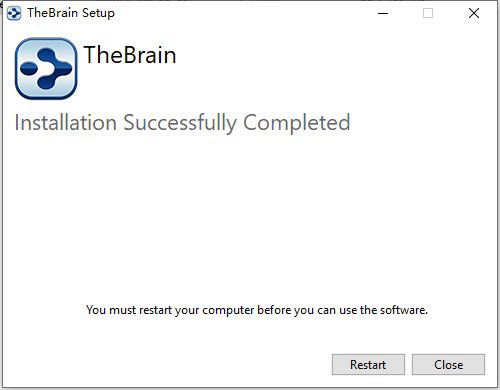
There were 36 patients in the keyhole endoscopy group, including 19 males and 17 females, with an average age of 48.2 ± 6.1 years (range, 31 to 72 years). Both groups of patients were treated within 24 h after paroxysm. According to operative method, the patients were randomly divided into two groups: the keyhole endoscopy group and the large trauma craniotomy group by random scale. Patients with cerebral haemorrhage caused by intracranial aneurysm, intracranial arteriovenous malformation, tumours, haemorrhage after cerebral infarction, long-term use of anticoagulants, and other disorders were excluded, as were cerebral hernia patients and patients with severe systemic diseases or dysfunction of other important organs, such as the heart, lung, liver and kidney. The patients in the two groups were diagnosed with HICH from 1/2019 to 12/2019 and had a haematoma that was locatable by imaging with a volume greater than 30 ml, all haematoma located above the tentorium, and they all had a history of hypertension.

In addition, for summary and analysis, we compared changes in the ‘brain-haematoma’ pressure gradient and its influence on surgery and postoperative effects for HICH patients treated with two different types of operations. We studied 72 patients with intracerebral haemorrhage who were treated from 1/2019–12/2019.

Changes in the “brain-haematoma” pressure gradient determine movement direction for the brain and haematoma, and differences in these changes in various operations produce diverse effects on surgical procedures and postoperative results. Variations in this gradient differ under three distinct conditions: post-cerebral haemorrhage, keyhole endoscopy and craniotomy. The ‘brain-haematoma’ pressure gradient plays an important role in the process of cerebral haemorrhage and in surgery. Hypertensive intracerebral haemorrhage (HICH) is a common neurosurgical condition with high morbidity 1 that accounts for 70% of stroke patients 2 and is associated with high mortality and a high disability rate 3 in particular, 61–88% of patients become severely disabled 4, 5.
#Thebrain 8 vs thebrain 9 registration#
Advantages of this approach include a high haematoma clearance rate, decreased bleeding volume, decreased operative time, reduced trauma, decreased postoperative brain oedema and improved postoperative recovery of neurological function.Ĭhinese Clinical Trial Register: ChiCTR1900020655 registration in 12/01/02,019 registration in 28/02/02,020 Number: NCOMMS-20–08,091. During keyhole endoscopy surgery, this gradient was relatively large and slowly decreased the haematoma was therefore easier to remove.

The magnitude and variation in the ‘brain-haematoma’ pressure gradient for different surgical methods significantly influence surgical procedures and effects of HICH. These differences were statistically significant ( P 0.05, 2.7% VS 2.8%) nor rebleeding rate ( P > 0.05, 2.7% VS 2.8%) showed any obvious changes. The mean operative time was 232 ± 26.1 min, the mean bleeding volume was 412.6 ± 35.2 ml, the average volume of blood transfusion was 281.3 ± 13.6 ml, and the average postoperative haematoma clearance rate was 82.3% moreover, the rate of severe oedema was 72.1%, and the average postoperative ADL score was 39.0%. When the haematoma was removed, the ‘brain-haematoma’ pressure gradient was small, averaging 132.3 ± 10.5 mmH2O, and slowly decreased. In the large trauma craniotomy group, ICP rapidly decreased after craniotomy.

The mean operative time was 83.6 ± 4.3 min, the mean bleeding volume was 181.2 ± 13.6 ml, no blood transfusions were given, the average postoperative haematoma clearance rate was 95.6%, the rate of severe oedema was 10.9%, and the average postoperative ADL score was 85.2%. In the keyhole endoscopy group, ICP decreased slowly the ‘brain-haematoma’ pressure gradient was large, averaging 251.1 ± 20.6 mmH 2O, and slowly decreased. Intraoperative characteristics (operative time, bleeding volume, volume of blood transfusion, and haematoma clearance rate) and postoperative characteristics (oedema, postoperative activities of daily living (ADL) scores, mortality rate and rebleeding rate) were compared between the two groups. Intraoperative changes in intracranial pressure (ICP) were monitored to calculate intraoperative alterations in the ‘brain-haematoma’ pressure gradient. Seventy-two patients with HICH treated from 1/2019 to 12/2019 were randomly divided into two groups, namely, the keyhole endoscopy and large trauma craniotomy groups, according to different operative methods. To comparatively study the size of and variation in the ‘brain-haematoma’ pressure gradient for different surgical methods for hypertensive intracerebral haemorrhage (HICH) and analyse the gradient’s influence on surgical procedures and effects of the haemorrhage.


 0 kommentar(er)
0 kommentar(er)
